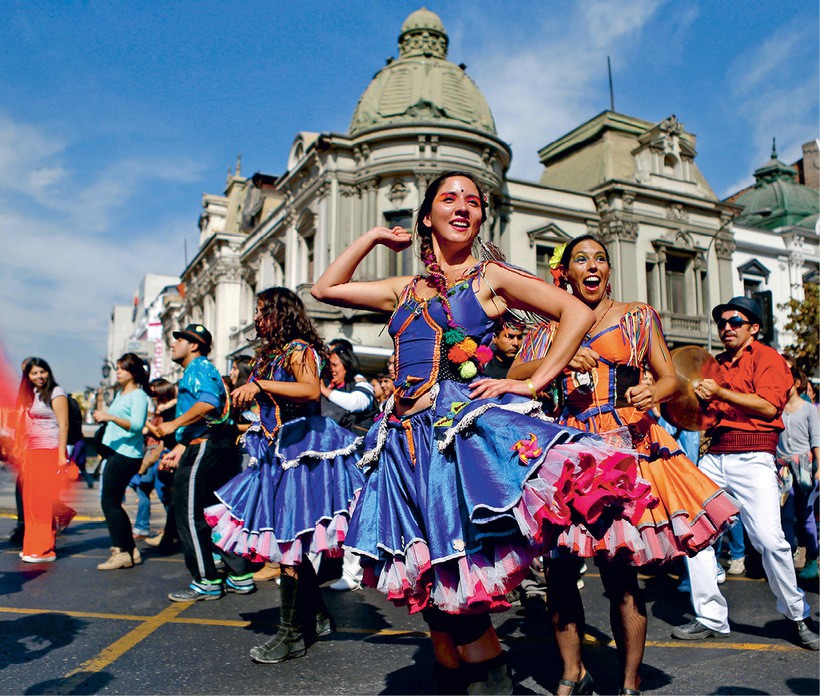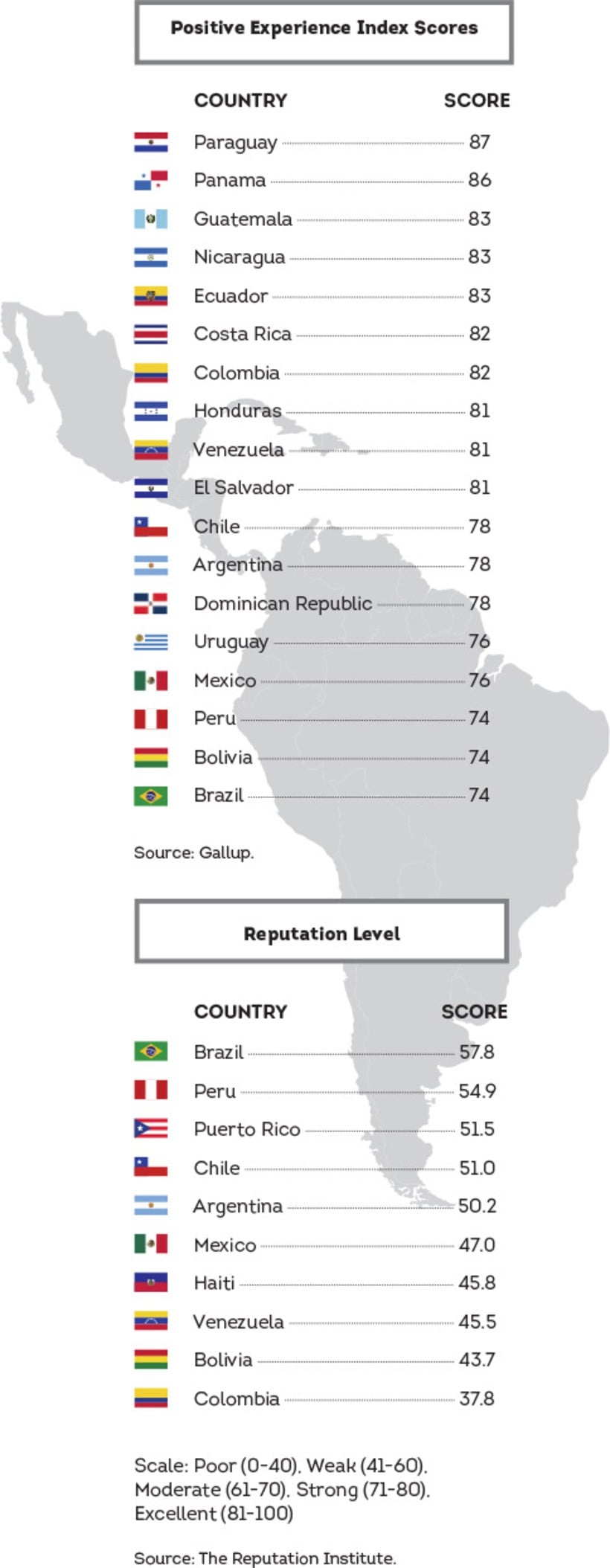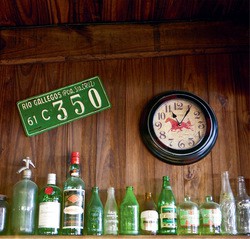Fiestas, Siestas, and Mañana
People often have the idea that Latin America is one homogeneous environment. Yet the vibrant and varied countries in the region have just as many differences as they do similarities. Each culture has particular geographic, historical, political, and economic backgrounds that have combined to make them the way that they are today.
The stereotypes still abound: fiestas, siestas, and mañana. Searching for information on the cultural differences among Latin America’s more than twenty countries is a surprisingly challenging task. The most common answers look at language – the dominance of Spanish, and then the words within the Spanish language that can almost instantaneously identify a speaker’s country of origin such as mande and güey in Mexico, che and vos in Argentina, or cachai and huevón in Chile. However, culture is complex. What we see on the surface is a reflection of deeper, underlying forces that shape a country and its people.
Generalizations are generally important. They help us wrap our minds around sizeable geographic areas, large groups of people, and broadly applicable ideas. Certainly the countries of Latin America share many cultural facets: most gained independence from colonial powers between 1810 and 1822, speak Spanish, and observe Catholicism. It is common for people to highly value relationships, take a polychronic view of time, and emphasize physical contact as an important part of non-verbal communication. What may be more interesting and critical for success, however, is to understand how insiders view the region’s countries as distinct rather than how outsiders view the region as a whole.
Cultural Mixology recently surveyed 250 natives from six Latin American countries to get an insider’s view on language, influences and perceptions, regional differences, values, formality, punctuality, and food. Here is some of what they had to say:
General Perceptions
In Brazil, there was a big emphasis on internal diversity. One respondent stated “There are seven countries in one.” Fifty-eight percent of Brazilians said that regional differences were most evident between the North and the South, and were mainly based on education, politics, and physical appearance. When asked how others perceive their culture, the most common responses were “mixed,” “diverse,” “informal,” “European,” and “having North and South American influences.” While words like “happy” and “humor” came up repeatedly in the top five values, Brazilians surveyed also called attention to the idea that, “People think Brazil is a huge party and a big mess, very focused on Carnival.” Many respondents cautioned that a love of soccer, samba, and Carnival means neither that Brazilians are carefree nor that those things apply to an entire culture.
Mexicans focused a lot on roots, frequently making reference to a rich history and indigenous influences. One-third of respondents identified regional differences as best seen between the North and the South. The North was described as “modern and rich,” the central area as “traditional and powerful,” and the South as “traditionally poor.” The top three words used to describe Mexican culture were: diverse, multicultural, and mestizo. Mexicans were also, however, keenly aware of many contradicting cultural perceptions. One respondent cited a “relaxed, but violent culture” while another talked about “seeming lazy” compared to the US and the classic stereotype of “the ‘little Indian’ leaning against a cactus, sleeping.”
Argentines talked about perceptions by focusing largely on issues of identity, both internally and externally. Two-thirds of respondents said that differences in Argentina are best seen between the capital, Buenos Aires, and all other areas, and are primarily reflected in speech, immigrant influence, and economic development. While one respondent said that Argentina is very centralized and “a country represented culturally, politically, and socially by its capital,” Argentines were also very cognizant of external perceptions and the fact that Argentina is “perceived differently in relation to the rest of Latin America.” Strong European influences and immigration patterns that are reflected in lighter skin colors than other countries in the region with greater indigenous populations were linked to the perception that Argentines “are not true Hispanics.” Words such as “superior,” “distinct,” and “egotistical” were the most common responses characterizing these views.
Chileans approached the question of perceptions with a strong emphasis on character. Similar to the way Argentines viewed regional differences, 71% of Chilean respondents indicated that differences in Chile are mostly between the capital, Santiago, and all other areas. “Everything happens in Santiago.” Differences were linked to time (Santiago was viewed as faster-paced with tighter work schedules versus free time), resources (presence and availability of hospitals, businesses, banks, and universities), and general development and opportunity. Chileans used words such as “conservative,” “cold,” “reserved,” and “serious,” to talk about how they feel their culture is perceived. At the same time, there was an emphasis on Chile’s “progressive and successful economy” (it ranks highest of all Latin American countries, excluding Puerto Rico, on the World Economic Forum’s Global Competitiveness Index for 2013-2014 and 34th globally), and the “friendly,” “supportive,” and “caring” nature of people.
Costa Ricans used the most positive terminology of all six countries surveyed when asked about perceptions of their culture and people. Words such as “peaceful,” “open,” “polite,” “happy,” and of course the infamous “pura vida” (defined loosely as “everything is cool” and used in a wide range of circumstances such as a greeting, a character trait, an affirmation of well-being, or a confirmation of understanding) came up time and again. Top values cited were “peace” (Costa Rica has had no army since 1948), “family and friends,” and “nature/environment.” Additionally, many Costa Ricans commented on the country and its culture in relation to the rest of Latin America. One respondent noted that, “The strong influence from the United States as well as the minimal connection to other Latin American countries make people perceive Costa Rica as alienated.”
In Colombia, respondents viewed the culture as segregated. Regional differences were divided according to major cities such as Bogotá, Barranquilla, Calí, and Medellín, and seen most starkly in speech, cultural traditions, physical appearance, and economic situations. One person commented that Colombians are perceived as “serious and cold if they are from Bogotá, partiers if they are from the coast.” Words such as “welcoming,” “friendly,” “happy,” and “culturally rich” were contrasted with “dangerous,” “drug dealers,” “cocaine,” and “corruption” when describing perceptions. The country’s acute awareness of this gap can be seen in a recent Colombian tourism campaign slogan: “Colombia, the only risk is that you’ll want to stay.”
What Outsiders Don’t Know
When asked what outsiders don’t know about Brazil, much of the focus shifted to business. Responses included the fact that there are many large, private high-t'echnology companies in the country, that Brazilians can be skilled negotiators, and that first names can be common in business meetings, an important difference from other South American countries such as Colombia or Chile where a higher degree of formality prevails.
Mexicans focused on misperceptions. For example, the often widespread confusion that Mexico’s Independence Day is celebrated on 5 May (it is in fact 16 September) or that there is nothing more to Mexico than “tequila, Corona, and the beach.” Mexicans highlighted the variety of cultures within their own country and that even classic foods (e.g., tacos, mole, tamales, and pozole) are made differently in different regions. Despite a fear of being perceived as “barbaric,” “dangerous,” and “corrupt,” Mexicans emphasized a strong commitment to “family,” “friendship,” and a “hope for a better future.”
Argentine respondents continued with the theme of identity influences when asked this question. They talked about the importance of the gauchos (and traditions of cooking asado, which is directly linked to gaucho customs), the Italian influence on culture (almost half of the population are estimated to have ties to Italian descent), and the effects of European roots on the people. One person noted, “So-called ‘Latin culture’ is closer to the North of South America or Central American than Argentinean. Our culture, as well as our architecture, the progressive spirit of our people, etc., is closer to European culture.”

A common theme in Chileans’ answers to this question was society. As one person commented, “It seems like a pretty open society, but it isn’t.” Chileans, similar to Argentines, frequently remarked that Chile is more like the US and Europe than other countries in Latin America. There was an emphasis on the level of education and knowledge of arts and literature that distinguishes their country from others in the region. Another frequent comment Chileans made was related to language and expressions particular to Chilean Spanish, many of which are derived from the influence of the native indigenous languages Quechua and Mapudungun.
When it comes to social functions, it could almost be considered rude to arrive on time as your host or hostess would likely not be ready. Distinctions must be made between functions that revolve around a meal (30 minutes late as a general rule) and those that are simply social gatherings (one to two hours late as a general rule). Our respondents agreed, with 56% of Mexicans, 55% of Costa Ricans, 43% of Argentines, 62% of Colombians, 83% of Chileans, and 36% of Brazilians saying it is acceptable to arrive at least 30 minutes late for a social event
Costa Ricans emphasized that many outsiders are surprised by elements of daily interactions. A frequently cited case was the fact that, “The word ‘no’ is rarely used.” Costa Ricans take things personally, and “every comment, positive or negative, affects us.” Courtesy, saving face, and maintaining relationships are key factors for cultural success. Other surprises for outsiders were linked to “tardiness” and “excessive relaxation.” While life in Costa Rica may move at a relatively slow pace and emphasize a work-life balance, it is still considered among the more punctual countries in the region.
Colombians felt that the main thing outsiders don’t know is that not everything is related to drugs and violence. For example, Colombia produces flowers and emeralds and Colombians are very entrepreneurial. It is the birthplace of the Lasik eye surgery technique and the pacemaker. Geographically speaking, “Many do not know there are three satellite islands in the Caribbean Sea (San Andrés, Providencia, and Santa Catalina) that belong to Colombia.”
Formality
The degree of formality that is appropriate in social and business contexts can be a great differentiator across cultures. Using a definition of formality that included the degree to which titles, forms of politeness, and social protocol and rules were employed, we asked survey respondents to rank their countries as “informal,” “moderately formal,” or “formal.”
The results showed that Colombians highly value formality, ranking above any other Latin American country in the survey. Ninety-three percent of respondents believe that Colombia is moderately or very formal. Moving further down the spectrum, a clear majority of Mexicans (65%) said that Mexico is a moderately formal culture. Interestingly, Argentines and Costa Ricans both overwhelmingly straddled the line between moderately formal and informal with 96% and 86% respectively saying that their cultures are moderately formal or informal. Finally, 81% of Brazilians viewed their culture as informal.
Punctuality
Mañana has
been jokingly defined as “anytime between tomorrow and never.” Despite
common labels of the region having a mañana culture, many do not take
into account the role that context plays.
Several years ago, the Pew Global Attitudes Project conducted a survey in which it asked whether people agreed that, “Most people in society are trustworthy.” They found that the percentage of people who agreed with that statement was 46% in Mexico, 42% in Argentina, 35% in Brazil, and 29% in Chile
When it comes to social functions, it could almost be considered rude to arrive on time as your host or hostess would likely not be ready. Distinctions must be made between functions that revolve around a meal (30 minutes late as a general rule) and those that are simply social gatherings (one to two hours late as a general rule). Our respondents agreed, with 56% of Mexicans, 55% of Costa Ricans, 43% of Argentines, 62% of Colombians, 83% of Chileans, and 36% of Brazilians saying it is acceptable to arrive at least 30 minutes late for a social event.
However, work is another story. When asked about arriving on time for work in the morning, 73% of Argentines and Costa Ricans said it was expected to arrive to work no more than 10 minutes late; 71% of Colombians, 66% of Chileans, 63% of Brazilians, and 53% of Mexicans said the same.
Emotions and Trust
One of the keys to truly understanding any culture lies in finding ways to understand and connect with its people, with emotions and trust being two of the critical components in the relationship-building process. Several research studies have looked at these factors in countries across the world and can be used to highlight additional similarities and differences in Latin America.
Emotions
One of the most interesting findings from the 2013 Gallup poll on positive emotions is that, “Of the 10 countries in the world with the highest percentages experiencing all of these positive emotions, all but one of them (Denmark) is in Latin America.” This has been linked, at least partially, to the fact that it is culturally common in the region to focus on many positive aspects of life, including the importance of family and relationships.
Positive Experience Index Scores (based on the 2013 Gallup survey) shows how Latin American countries stack up against one another.
 Trust
Trust
The concept of trust can be assessed on several different levels, including the degree to which we trust people from our culture and the amount of trust that we place in our country’s government, institutions, and systems. Regardless, most studies show that trust in a culture is related to income equality and corruption levels – the lower the level of income equality, the higher the level of corruption, hence a lower level of trust in society overall. Several years ago, the Pew Global Attitudes Project conducted a survey in which it asked whether people agreed that, “Most people in society are trustworthy.” They found that the percentage of people who agreed with that statement was 46% in Mexico, 42% in Argentina, 35% in Brazil, and 29% in Chile (Costa Rica and Colombia were not included).
Another study, conducted in 2013 by The Reputation Institute, asked 27,000 consumers in G8 countries about 50 countries around the world to determine those countries’ overall reputation, whether the respondents had a “good feeling” about the countries, whether they admired and respected the countries, and whether they trusted the countries. All Latin American countries included in the survey scored in the poor to weak range (see “Reputation Level”).
Locals and Outsiders
As one anonymous respondent aptly pointed out, “Those outside Latin America perceive all Latin American countries equally; they can’t distinguish whether they are from Argentina, Chile, Peru, Colombia, etc.”
When cultural patterns are only slightly different, as is often the case with countries within a region such as Latin America, it can be harder to see the variations than when comparing countries that are more obviously distinct. It is easy to fall into the trap of thinking that shared language equals shared values equals shared behaviors. However, understanding how insiders view the region’s countries as distinct rather than how outsiders view the region as a whole is a critical factor for success.Jamie B. Gelbtuch, MBA, PMP, is founder and principal consultant of Cultural Mixology, which designs, delivers, and facilitates cultural coaching and training programs in international environments.












